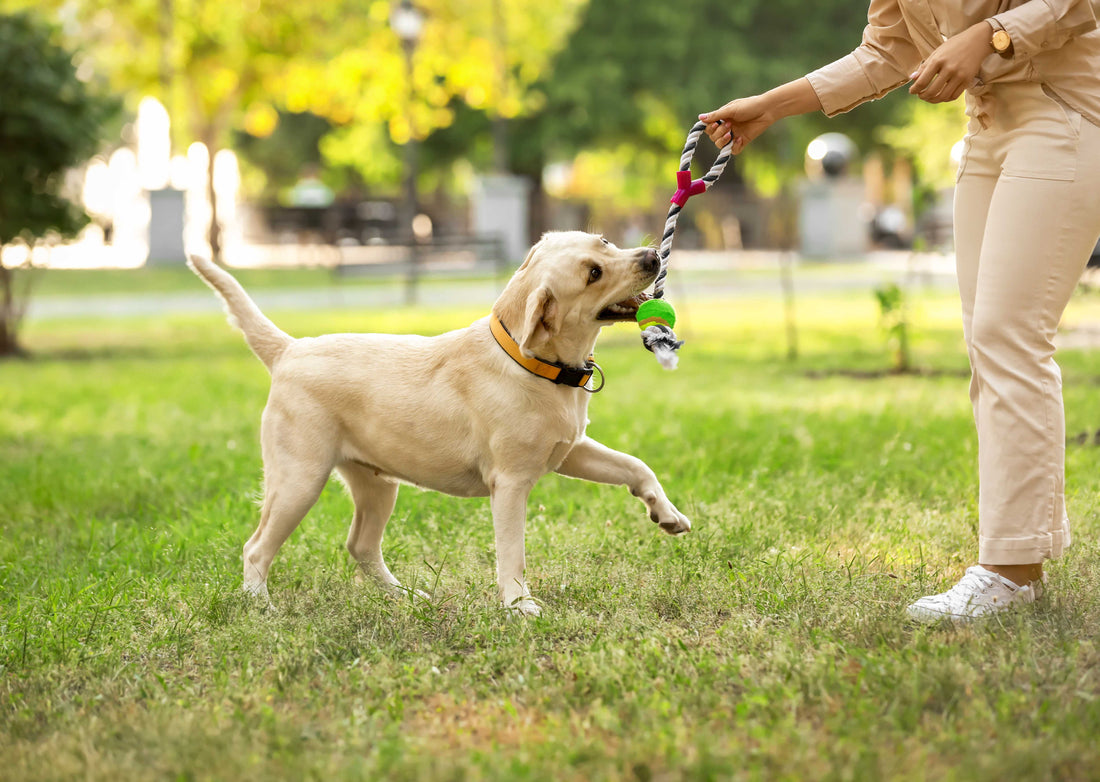Is your pup turning into a neighbourhood noise complaint? Don't worry, you’re not alone! Excessive barking can be frustrating, but there are ways to help your furry friend calm down. With the right training techniques and behaviour modification strategies, it can be managed effectively. Let’s get into some practical tips and methods to help you reduce your dog’s barking and improve their overall behaviour.
Understanding Why Dogs Bark
Understanding why your dog barks is the first step to solving the problem. Here are some common reasons:
- Attention-Seeking: Sometimes, barking is just their way of getting your attention.
- Boredom Blues: If your pup is lonely or bored, they might bark to entertain themselves.
- Frightened or Anxious: Loud noises, strangers, unfamiliar sights and sounds, or being alone can trigger anxious barking. Pups with separation anxiety may also bark to express their feelings.
- Protective instincts: Some dogs bark to guard their territory.
- Playfulness: Barking can also be a form of play or excitement.
Training Techniques to Reduce Barking
Once you know why your dog is barking, you can start to tackle the problem. Here are some tips:
1. Positive Reinforcement
Positive reinforcement involves rewarding your dog for desired behaviours. This method encourages your dog to repeat good behaviours and reduces unwanted barking. You can do this by rewarding calm behaviour and giving them treats, praise, or playtime. Teach your furry friend commands like ‘quiet’, ‘leave it’, or ‘whisper’ and reward compliance. Be consistent with rewards to reinforce the behaviour you want. Training your pup and looking for healthy treats to help? The Healthy Pet Co. offers a nutritious range perfect for these moments.
2. Desensitisation and Counterconditioning
Desensitisation involves exposing your dog to the trigger of their barking in a controlled way, while counterconditioning changes their emotional response to the trigger. You want to identify any triggers to determine what causes your dog to bark. Next, gradually expose your dog to the trigger at a distance where they don’t bark. Reward them with treats and praise when they stay calm.
3. Manage Their Environment
Modifying your dog’s environment can help reduce barking triggers. You can block visual triggers by using curtains, blinds, or privacy fences to limit your dog’s view of potential triggers.
Just like us, pups can be sensitive to sounds too. Play music or white noise to mask sounds that may cause barking. Create a comfortable and safe space for your dog where they feel secure.
4. Interactive Toys and Exercise
Providing adequate mental and physical stimulation can prevent boredom-related barking. Keep your dog mentally and physically stimulated with toys, puzzles, and exercise.
Ensure your dog gets enough physical activity through daily walks, runs, or playtime. You can also use puzzle toys and treat-dispensing toys such as the ones in The Healthy Pet Co. range to keep your dog engaged. Incorporating training sessions into your dog’s routine for mental stimulation is also great for managing excessive barking.
5. Addressing Separation Anxiety
If your dog barks due to separation anxiety, specific strategies can help. Practice leaving for short periods and gradually increase the duration. Comfort items also go a long way. Provide toys, blankets or even old t-shirts that have your scent. If the barking is severe, consider consulting a professional trainer or behaviourist.
Behaviour Modification Strategies
Teach the ‘Quiet’ Command
Teaching your dog to be quiet on command can be very effective. Allow your dog to bark a few times, then say ‘quiet’ in a calm, firm voice. When your dog stops barking, even for a few seconds, reward them with a yummy treat. Consistent practice helps reinforce the command.
Use a Head Halter
A head halter can help control your dog’s barking and guide their attention. Ensure the head halter fits correctly and comfortably. You want to introduce the halter with positive reinforcement, like treats and praise. Using the halter during walks also helps to gently redirect your dog’s focus.
Avoid Negative Reinforcement
Punishing your dog for barking can lead to more issues. Instead, focus on positive methods. Avoid yelling, as it can increase your dog’s anxiety and barking. Dogs might also mistake yelling for excitement, causing them to bark even more. It’s also important to recognise that physical punishment is a big no and can damage your bond with your dog. Instead, redirect your dog’s attention to a positive activity when they start barking.
Common Mistakes to Avoid
- Inconsistency: Be consistent with training methods and rewards.
- Reinforcing Barking: Don’t inadvertently reward your dog for barking, such as giving attention when they bark for it.
- Ignoring Underlying Issues: Address any underlying issues like anxiety or boredom that may be causing the barking.
A Calm Space for You and Your Pup
It might take time to see results, but with consistency and love, you can help your dog become a quieter companion. By using positive reinforcement, desensitisation, and providing adequate mental and physical stimulation, you can reduce your dog’s barking and improve their overall behaviour. At The Healthy Pet Co., we’re here to support you and your furry friend with expert advice and high-quality products tailored to your pet’s needs. Create a calmer home for you and your canine buddy today.




